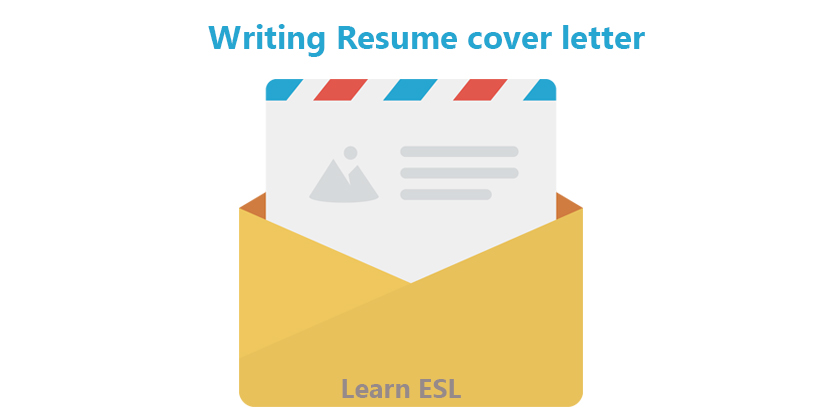
Writing Resume cover letter
While your resume is an overview of your job qualifications, your cover letter puts the spotlight on the best qualities you have to offer a prospective employer in a specific job – the job you want!
Resume cover letters also provide answers that aren’t appropriate to include in a resume. For instance, why you’re interested specifically in Company X or a positive answer as to why you’ve been out of the job market for the last six months.
In fact, a cover letter is your first chance to “voice” your enthusiasm about this new job opportunity and pass your enthusiasm on to an interviewer. A good cover letter motivates an interviewer to give you a call in the hope that you’re the right person for the job.
The Cover Letter Template
Don’t use just one! Write each cover letter in your own words. Make each one specific to the job you want and to the company to which you’re applying. However, you should include some elements in each cover letter you write.
Your AddressIn print cover letters, your contact information goes at the top. In emailed communications, it goes under your signature. |
Your name Mailing address City, state, zip Telephone number(s) Email address The Date |
| Their Address Address your letter to the person who does the hiring. Call the company and ask for his/her name. |
Their name Professional title (if any) Company name Mailing address City, state and zip |
| Salutation One of the biggest gripes of recruiters is the “To Whom it May Concern.” or “Dear Sir or Madam”. Be sure to use their name. |
Dear Mr. (or Ms.) last name: |
| First Paragraph Get your reader’s attention with your first sentence. Always put the employer’s interests first! Try not to start your letter with “I”. Remember, you want to show your employer that hiring you is in his/her best interest as well as yours. |
Begin by telling what led you to look for this specific position with this specific business. Special knowledge about the company or a company-specific reason for your inquiry pays a subtle compliment to the company and is a sure way to impress your reader. |
Body Paragraphs |
Be specific in every aspect of your cover letter, highlighting only the best qualities you can bring to “this” company in the specific job you seek.
Tell precisely, in one or two paragraphs, how your skills meet the employer’s needs and benefit the business as a whole. |
| Course of Action This is no time to be shy! Ask for the interview. Remember to say “Thank you” |
Indicate the employer that you are interested in interviewing with them.
“I would look forward to an interview with your company, you can contact me at the address or phone number listed above. “Thank you for your time and consideration.” |
Closing |
Sincerely,
Your handwritten signature(except for emails) Your name (typed) |
| Enclosure | Enclosure: resume |
Types of Cover Letters
“Help Wanted” is an invitation. RSVP it with your resume cover letter.
About 20% of the job market is like an “open house” invitation sent via ads, job postings, employment agencies, and recruitment centers. Write your resume cover letter in response to an ad or job posting like an RSVP to an important event.
- Tell the employer where you found the add
- Answer the ad by matching specific qualifications with the job requirements mentioned in the add
“In reading your advertisement for (job title) in the (name the source), I see that my abilities fit your needs.
- Then list the requirements in reference to your qualifications
- Put the company’s needs (the requirements) first and how you “fit” the requirements second
- You need – I have
Getting a foot in a closed-door
About 80% of the job market is behind “closed” doors. However, often that 80% hides the crème de la crème positions. Open some doors by compiling a list of companies in your chosen field of work and use your resume cover letter to introduce yourself and inquire about possible employment.
When sending inquiries, make each cover letter specific to the company as well as to your preferred job. In addition to compiling a list, research each company so that your inquiry ‘speaks their language.” Read their advertisements, news releases, brochures, and ask insiders (if you know any) for company information.
“Last week, I was pleased to read in the (name of source) that (company name) is expanding its (operations, physical plant, department name, etc.). This is the exact area that my (specific job-related experience or education) has led me to target in looking for employment as (job description or title.)”
A foot in the door
One of the best additions you can make to a cover letter, whether answering an ad or making an inquiry is a referral. Name-dropping is frequently a foot in the door!
“The other day on the golf course, (name) mentioned that your company has an opening in (field or department) that fits my qualifications to a tee!”
If you have a mutual friend, know someone who is already a valued employee, or are an acquaintance of a potential employer’s colleague, ask them if you can mention them in your cover letter and do it in the first line to help your resume stay on top of the pile.
Searches related to Writing Resume cover letter
- how to write a cover letter for a job application
- free cover letter examples
- cover letter for job application
- simple cover letter for job application
- cover letter meaning
- cover letter examples for jobs
- cover letter for internship
- cover letter examples 2017
